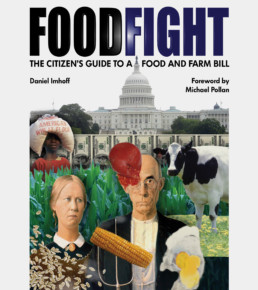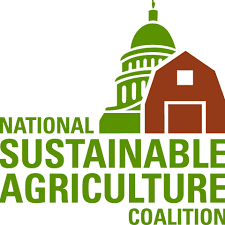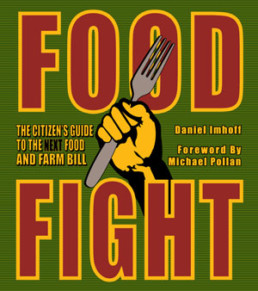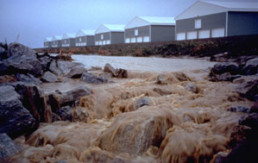Every five years, Congress revisits and passes a massive but little understood legislation known as the Farm Bill. Originally conceived as an emergency bailout for millions of farmers and unemployed during the dark times of the Dust Bowl and Great Depression, the Farm Bill has snow-balled into one of the most—if not the most—significant forces affecting food, farming, and land-use in the United States. In a country consecrated to private property rights and free market ideals, it might seem hard to fathom that a single legislation could wield such far-reaching influence. But to a large extent, the Farm Bill determines what sort of foods we Americans eat (and how they taste and how much they cost), which crops are grown under what conditions, and, ultimately, whether we’re properly nourished or not.
BOOKS
The Farm Bill A Citizen’s Guide
This is the third edition of our primer on the Farm Bill, the important legislation governing how $100 billion is spent each year on agriculture, food assistance, conservation, rural development and other programs. The book was completely revised and updated for the 2018 Farm Bill with the help of researcher Christina Badaracco and published by Washington, D.C.-based Island Press. The primer has become a popular text for concerned citizens, policy makers and the growing number of university courses that focus on food systems and government policy.
Foodfight The Citizen’s Guide to the NextFood and Farm Bill 2012
Foodfight
The Citizen’s Guide to the Next
Food and Farm Bill
2012
Our book Food Fight stresses the importance of “voting with your fork.” Each year the US Department of Agriculture spends $100 billion on food stamps and support for farms and ranches through a legislation called the Farm Bill. To take better care of the planet, and ourselves the American public needs to weigh in on how these dollars are spent. Citizen awareness and civic engagement are the keys and reading Food Fight is an essential first step

Foodfight A Citizen’s Guide to the Farm Bill2007
In the winter of 2006, Dan Imhoff assumed the daunting task of writing a primer about the US Farm Bill for general audiences. With concise language and dynamic infographics, the book explained the many issues related to Farm Bill programs: commodity agriculture subsidies, conservation, food stamps, trade, energy, etc. The Food Fight book, and the many presentations about it, made the Farm Bill a newsworthy topic and inspired many
VIDEO
HOW YOU CAN HELP
Click here to print a complete list of actions you can take in your everyday life.
- Learn about the Farm Bill. This will require “cracking the code” of Farm Bill lingo. The USDA has a lot of useful information, including the full text of the bill itself and specialized reports.
- Bring local officials up to speed. A local Farm Bill agenda can easily begin with a community group. Perhaps political leaders will engage once they understand the movement is legitimate.
- Create outreach and educational opportunities. Communicate to your community why they have an interest in the outcome of Farm Bill debates. Look over Environmental Working Group Farm Subsidy databases and other search engines to familiarize yourself with spending in your state.
- Build coalitions. Identify the many constituencies affected by local food systems: family farms, public health offices, economic development groups, local schools, government agencies, charities, food policy councils, social justice movements. Develop partnerships to spread the word.
- Take the long view. Change rarely happens over the span of just one Farm Bill. Learn about how previous gains were made—and realize that they must be supported and defended through the long process of appropriation, implementation, rule making, and so on.
Click Here to Print a complete list of actions You can take in Your everyday
life
LIST OF ACTIONS
COLLABORATORS








